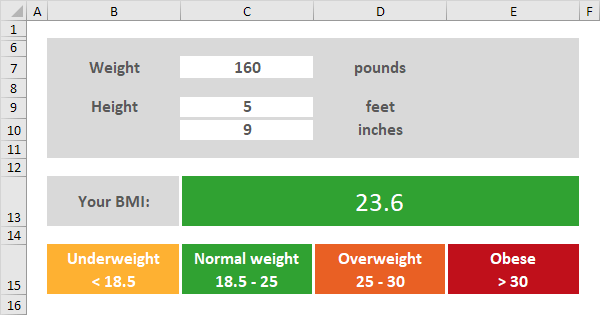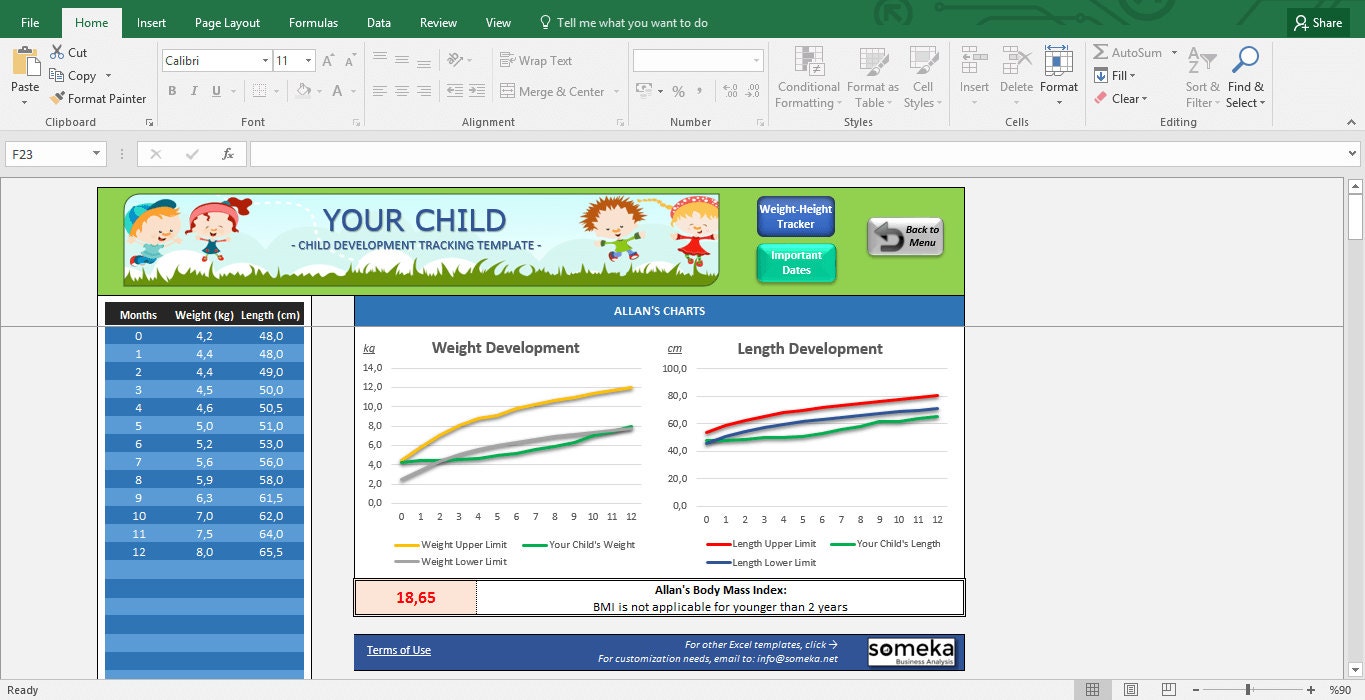

- #ADDING BODY MASS INDEX CALCULATOR INTO EXCEL FULL#
- #ADDING BODY MASS INDEX CALCULATOR INTO EXCEL SERIES#
The full set of valid z-score types that can be used for the second parameter are listed below. The quotes for this second parameter are also required. The second parameter, “BMI”, tells the program to calculate a z-score for body mass index for age. The full set of valid references that can be used for this parameter are listed below.įigure 11.12: Valid Values for First Parameter fixed values, the calculations will always refer to the exact CDC 2000 value). The quotes are required as the first two parameters are literal values (i.e. The function will be similar to the following: ZSCORE("CDC 2000", "BMI", BMI, AgeMonths, Gender). If you wish to calculate body mass index for age using the CDC 2000 Growth Reference, the function must reference the child’s raw BMI (column BMI), the child’s age in months (column AgeMonths), and the child’s gender (column Gender).

#ADDING BODY MASS INDEX CALCULATOR INTO EXCEL SERIES#
Note: The data available in the Nutrition project stores gender information as M and F and must be converted to 1’s and 2’s.Įach parameter is separated by a comma, and the entire series of parameters are enclosed in parenthesis. Name of the column that stores the child’s gender, stored as 1’s and 2’s.Name of the column that stores the secondary measurement (i.e., AgeMonths).Name of the column that stores the primary measurement (i.e., BMI).Type of z-score (i.e., body mass index for age).Growth reference set (i.e., the CDC 2000 Growth Reference).To view and change these options, from the calculator select ‘ View‘ and select the option that you want.The ZSCORE function takes a series of parameters and returns a z-score (z statistic) based on those parameters. Once opened, did you know you can also change the type of calculator? As well as the ‘basic’ calculator, you can have a scientific or programmers calculator, and there are also options to display various conversion calculators too.Simple! To open the calculator, click on this icon. There will be a calculator icon displaying in your quick access toolbar. Next, click ok, and you’ll be returned to your spreadsheet.You can also use the up and down arrows on the far right hand side to change the order that these icons are displayed on the toolbar. You can choose whether to show these icons for all documents or only for selected documents. You’ll see the Calculator will now be added to the box on the right hand side showing items in your toolbar. Select the calculator option and click the ‘ Add‘ button.From the dropdown box on the left hand side, labelled “Choose command from” select ‘ All Commands‘ then scroll down to find ‘ Calculator‘.You’ll then see the Excel Options dialogue box from which you can format the icons accessed from your Quick Access Toolbar.From the drop down menu here choose “More Commands”.Access the quick access menu and click the drop down arrow on the right hand side (this menu is found at the very top of your screen, where the undo/redo arrows are).Adding the calculator to your Quick Access Toolbar in Excel 2010 There have been many times when a calculator would have been handy for me whilst working in Excel, but it took me a while to discover that you can actually add a calculator into your Quick Access Toolbar! Now of course, there will be some clever people who will tell us that Excel will do most calculations for us anyway, and that is true! But but there are time when you need to make a one off calculation, and you need to know there and then – and in this case it’s quicker to use a calculator than spend time writing out the formula. Microsoft Excel has lots of little hidden tips, tricks and add-ons that many people don’t know about, and it’s my mission to make these lesser known functions known to the world!


 0 kommentar(er)
0 kommentar(er)
